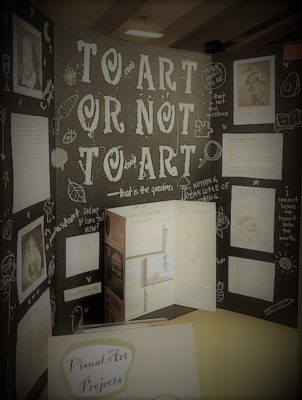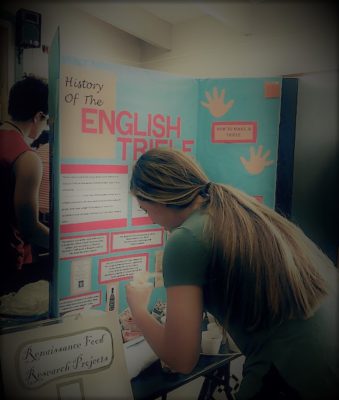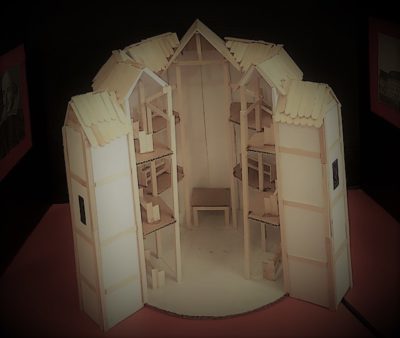Assessment. That’s a loaded word these days, particularly in the last months of the school year. But, what is it, really? Is it the state test? Is it an essay? Is it multiple choice?
Of course, the answer is yes to all of that, but there is so much more. We could get into the semantics of what is summative or formative assessment, and what type/mode/format of assessment is more valid or reliable or necessary. However, today I am interested in discussing one particular sort of assessment: publishing.
What I mean by “publishing” is this particular definition: to make publicly or generally known.
The Washington State English Language Arts Standards reference it:
W.9-10.6 Production and Distribution of Writing
Use technology, including the internet, to produce, publish, and update individual or shared writing products, taking advantage of technology’s capacity to link to other information and to display information flexibly and dynamically.
Ooh…and “to display information flexibly and dynamically!” That really gets to the heart of the matter, there. How do we assess this? How do we teach our students to publish? to create products? to display information flexibly and dynamically? And then, once we do teach these skills, how do we assess them?
My answer to all these questions is project-based learning. This last week, while my seventh-graders were busy toiling over their answers on the Smarter Balanced Assessment, my ninth-graders were wowing the public with their “Shakesfair” projects. Both of these assessments are valid. Both give me information that informs my practice. Both can really stress a kid out if they don’t have the skills or support. And, both can bring a sense of pride and accomplishment.

Animatic Project for Shakesfair 2018
The difference is that one can also be an entertaining and educational way to connect with families and the community. It can inspire creativity, and it can celebrate individuality. It can encompass so many aspects of a child’s intelligence, skills, and talents. I can tell you without a doubt that the projects my students create prove their understanding of the material we cover in class. They also extend the learning, showing the reading, writing, communication, and research skills I am teaching them. These are valid assessments, and they also “display information flexibly and dynamically.”
On the down side, projects can be a royal pain. They are messy, hard to manage, and time-consuming. They require a teacher to set firm guidelines and offer support in ways he or she never imagined, like problem-solving last-minute tech issues for an Animatic animation, or finding creative ways to serve non-alcoholic English trifle to hundreds of guests. While projects bring out the most creative and imaginative attributes of most students, they bewilder and frustrate others, often those with special needs. To avoid these pitfalls, projects take tons of preparation, patience, and dedication.
I am committed to assessing my students with projects several times a year. Sometimes these are project-based learning activities, and sometimes they are just projects. To understand the difference, check out the handy table here. Some of my project-based assessments are small, such as one day tasks chosen from a menu to show understanding of a text through multiple pathways. These are simple and not too terribly messy or complicated to score. Each grade level gets a couple big projects, too. Some are group projects, some are individual, and some are flexible. They choose. Student choice is paramount for successful projects. For all projects, I have carefully crafted rubrics and timelines and rules established over time. Of course, that was all accomplished through trial and error, pursuing a good idea and learning how terribly complicated it really was!
That said, project-based learning is not for every teacher. It takes a willingness to face the issues head on. It takes a lot of patience to guide students through the discomfort they often experience when they actually have choices. It takes a lot of nerve.
Now the nerve is what you need when you get to the publishing part. That part requires the PUBLIC. The public is your audience. They see the whole big, beautiful mess, with all of its warts and all of its wackiness. You have to be willing to let your students shine or fizzle in a public format. And that is very, very hard.

Historical Recipe Project
At our 14th Annual Shakesfair, my students were shining. Well, mostly. We had Renaissance Era a slightly messy smorgasbord of food – trifle, roast chicken, meat pies – served by enthusiastic students. We had music researched and played heroically by young musicians, and there was a variety of artwork created by students who surprised their classmates with their hidden talents. Others shared creative writing based on Shakespeare- short stories, poetry, and songs. Several this year chose analytical writing, critiquing plays and films and examining themes. A select few gave slide show presentations, and there were the always popular models of the globe theater. Students from previous years came in and begged to show the films they produced when they were freshmen, and we all enjoyed seeing their first attempts at film-making once again.
I have thirty freshmen this year and well over a hundred visitors joined them. Parents, grandparents, staff, upperclassmen, and members of the community came and viewed their work, displayed “flexibly and dynamically.”
It was an exhausting time. The project overlaps with a full month of our Shakespeare unit, but the last week is a flurry of activity. And, to top it off, I was proctoring the 7th grade assessment for three hours on the day of the event, with no prep time. Luckily, my students in my afternoon classes chipped in to help set up, and clean up was well-managed and fast. I have a system.
To those brave and crazy enough to take on project-based learning, I am here to tell you that it is worth it. You will never forget the creativity and enthusiasm of your students, and the praise of their families. And, neither will they.

Ubiquitous Globe Theater Project
=========================================================================
Do you assess with projects? Tell me how your students publish their work and create products to share.